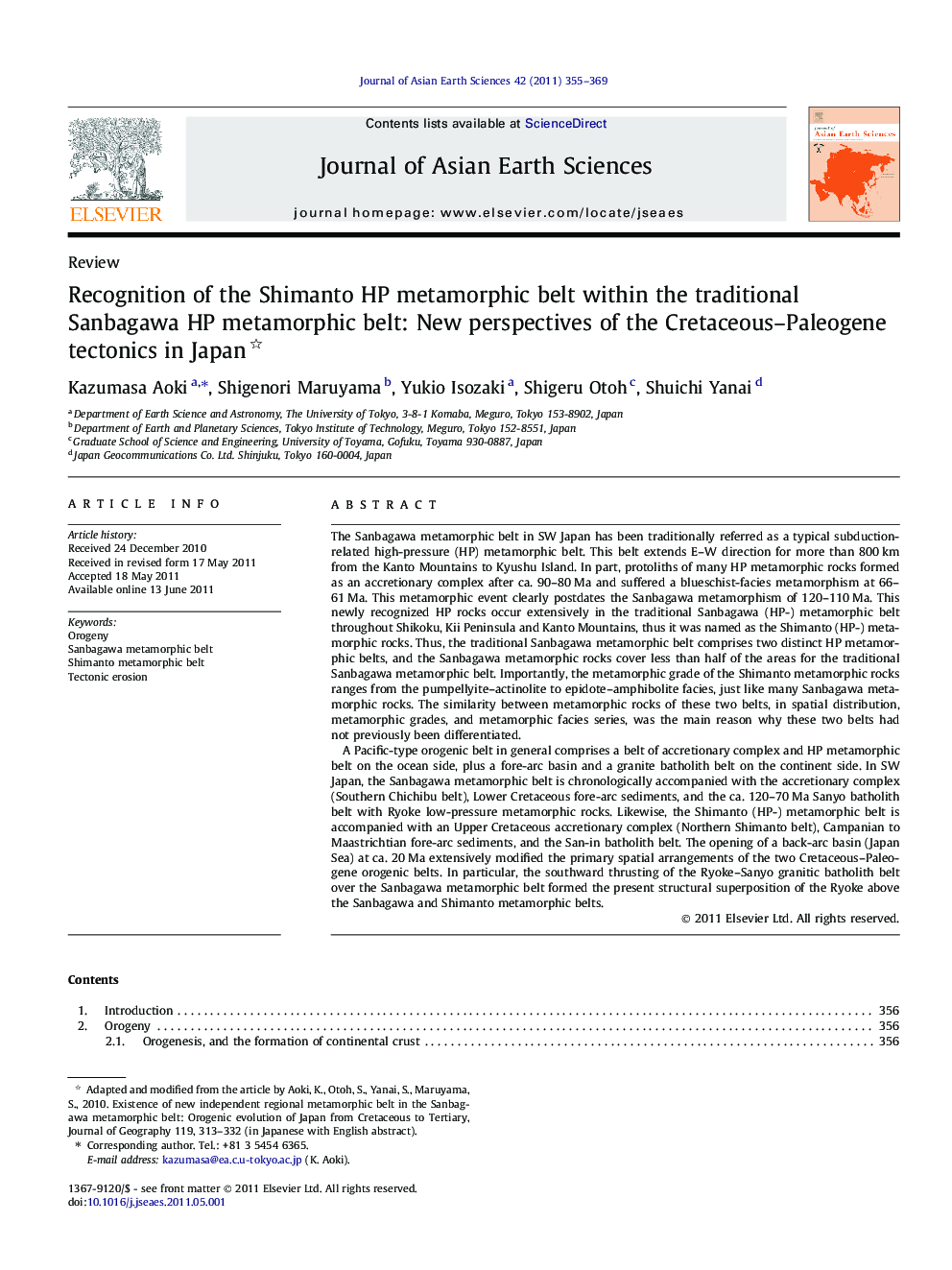| کد مقاله | کد نشریه | سال انتشار | مقاله انگلیسی | نسخه تمام متن |
|---|---|---|---|---|
| 4731860 | 1356825 | 2011 | 15 صفحه PDF | دانلود رایگان |

The Sanbagawa metamorphic belt in SW Japan has been traditionally referred as a typical subduction-related high-pressure (HP) metamorphic belt. This belt extends E–W direction for more than 800 km from the Kanto Mountains to Kyushu Island. In part, protoliths of many HP metamorphic rocks formed as an accretionary complex after ca. 90–80 Ma and suffered a blueschist-facies metamorphism at 66–61 Ma. This metamorphic event clearly postdates the Sanbagawa metamorphism of 120–110 Ma. This newly recognized HP rocks occur extensively in the traditional Sanbagawa (HP-) metamorphic belt throughout Shikoku, Kii Peninsula and Kanto Mountains, thus it was named as the Shimanto (HP-) metamorphic rocks. Thus, the traditional Sanbagawa metamorphic belt comprises two distinct HP metamorphic belts, and the Sanbagawa metamorphic rocks cover less than half of the areas for the traditional Sanbagawa metamorphic belt. Importantly, the metamorphic grade of the Shimanto metamorphic rocks ranges from the pumpellyite–actinolite to epidote–amphibolite facies, just like many Sanbagawa metamorphic rocks. The similarity between metamorphic rocks of these two belts, in spatial distribution, metamorphic grades, and metamorphic facies series, was the main reason why these two belts had not previously been differentiated.A Pacific-type orogenic belt in general comprises a belt of accretionary complex and HP metamorphic belt on the ocean side, plus a fore-arc basin and a granite batholith belt on the continent side. In SW Japan, the Sanbagawa metamorphic belt is chronologically accompanied with the accretionary complex (Southern Chichibu belt), Lower Cretaceous fore-arc sediments, and the ca. 120–70 Ma Sanyo batholith belt with Ryoke low-pressure metamorphic rocks. Likewise, the Shimanto (HP-) metamorphic belt is accompanied with an Upper Cretaceous accretionary complex (Northern Shimanto belt), Campanian to Maastrichtian fore-arc sediments, and the San-in batholith belt. The opening of a back-arc basin (Japan Sea) at ca. 20 Ma extensively modified the primary spatial arrangements of the two Cretaceous–Paleogene orogenic belts. In particular, the southward thrusting of the Ryoke–Sanyo granitic batholith belt over the Sanbagawa metamorphic belt formed the present structural superposition of the Ryoke above the Sanbagawa and Shimanto metamorphic belts.
► The Shimanto metamorphic rocks are newly recognized in Japan.
► These rocks suffered a HP metamorphism which clearly postdates the Sanbagawa HP metamorphism.
► Moreover, these rocks occur extensively in the traditional Sanbagawa metamorphic belt.
► Thus, the traditional Sanbagawa metamorphic belt comprises two independent HP metamorphic belts.
Journal: Journal of Asian Earth Sciences - Volume 42, Issue 3, 10 August 2011, Pages 355–369